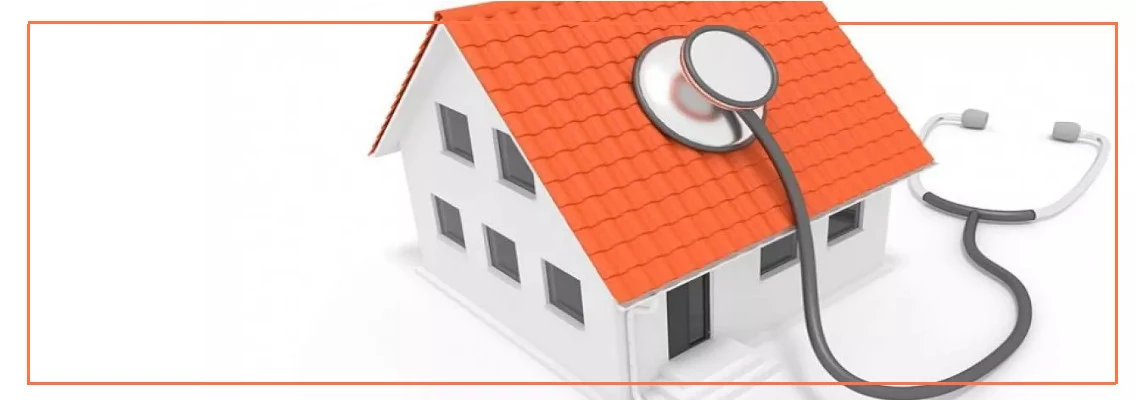
COMMON PROBLEMS WITH UNINSULATED EXTERNAL WALLS*
If your home has uninsulated external walls, you may be facing a wide range of issues that can cause discomfort, damage, and high energy bills. In this blog post, we'll explore the common problems that arise when external walls are left without insulation, and provide you with some solutions to these issues. From damp and mould to structural damage and heat loss, we'll take a closer look at the consequences of uninsulated external walls and provide you with the information you need to make an informed decision about insulation. So, let's get started and learn more about the dreadful consequences of uninsulated external walls.
WHAT IS EXTERNAL WALL INSULATION?
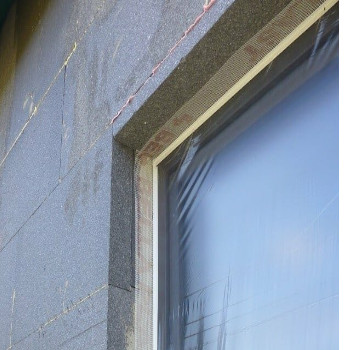 External wall insulation (EWI) is a type of insulation that is applied to the outside of a building's walls. It creates a barrier that helps to keep heat inside your home during the winter and out during the summer. This means that your home will be better insulated, and you will need to use less energy to heat or cool it. EWI can also help to reduce noise pollution, as it acts as a sound barrier, preventing noise from outside from entering your home.
External wall insulation (EWI) is a type of insulation that is applied to the outside of a building's walls. It creates a barrier that helps to keep heat inside your home during the winter and out during the summer. This means that your home will be better insulated, and you will need to use less energy to heat or cool it. EWI can also help to reduce noise pollution, as it acts as a sound barrier, preventing noise from outside from entering your home.
There are several types of external wall insulation, including:
Expanded polystyrene (EPS) insulation
This type of insulation is lightweight and easy to install. It consists of foam boards that are attached to the external wall with adhesive and mechanical fixings.
Mineral wool insulation
Mineral wool is a type of insulation made from spun fibers of rock. It is a good choice for buildings with irregular walls and can be installed using a variety of methods, including adhesive bonding and mechanical fastening.
Phenolic insulation
Phenolic insulation is a high-performance material that offers excellent thermal insulation properties. It is lightweight and can be applied in thin layers, making it a good choice for buildings with limited space for insulation.
WHY IS EXTERNAL WALL INSULATION BETTER AND BEST?
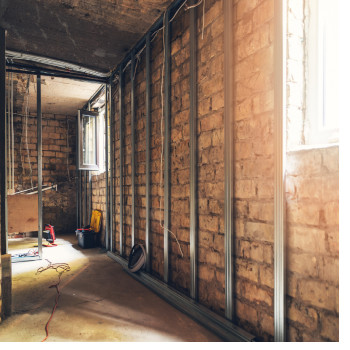 EWI is a better solution for insulation than traditional insulation methods, such as fibre glass insulation. One of the major advantages of external wall insulation is that the installation process does not require any disruption to the inside of your home. Unlike other insulation methods, such as internal wall insulation, there is no need to remove plasterboard or make any changes to the internal walls of your home.
EWI is a better solution for insulation than traditional insulation methods, such as fibre glass insulation. One of the major advantages of external wall insulation is that the installation process does not require any disruption to the inside of your home. Unlike other insulation methods, such as internal wall insulation, there is no need to remove plasterboard or make any changes to the internal walls of your home.
Additionally, external wall insulation does not reduce the usable space in your home. Traditional insulation methods, such as Kingspan K118 insulated plasterboard, can reduce the width of the walls, resulting in a loss of internal floor space. However, with EWI, the insulation is applied to the outside of the building, meaning that the interior space is unaffected.
Furthermore, German technology and building standards place a high emphasis on the importance of external wall insulation. This is because external wall insulation is the most effective way to improve the energy efficiency of a building. By insulating the exterior walls, heat is prevented from escaping through the walls, resulting in significant energy savings and lower carbon emissions.
Additionally, EWI is more effective than other insulation methods, as it covers the entire wall surface, eliminating any gaps or areas where heat can escape.
EWI is also the best solution for insulation in homes that have solid walls or are difficult to insulate using traditional methods. EWI can be applied to any type of building, including those with historic or listed status.
THE MAIN PROBLEMS OF NOT HAVING EXTERNAL WALL INSULATION (EWI)
Many homes still have uninsulated external walls, which can cause several problems such as:
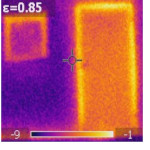 1. Heat Loss
1. Heat Loss
Uninsulated external walls can result in significant heat loss, especially during the winter months.
Without insulation, heat from your home can escape through the walls, making it difficult to maintain a comfortable temperature indoors. This heat loss can also lead to higher energy bills and wasted resources.
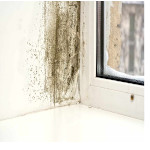 2. Damp and Mould
2. Damp and Mould
Most homes in the UK are constructed using brick, which is why they are particularly susceptible to problems associated with uninsulated external walls. The main problem of not having external wall insulation is that it makes your home more susceptible to damp and mould growth.
This is because moisture from the air or rainwater can easily penetrate the walls, causing damp patches to form.
Over time, this dampness can lead to mould growth, which not only poses health risks but can also cause structural damage to your home.
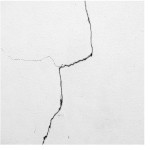 3. Structural Damage
3. Structural Damage
Uninsulated external walls can also cause structural damage to your home over time. When water penetrates the walls, it can freeze and expand, causing cracks and weakening the structure of the wall.
This can lead to more significant problems, such as collapsing walls, which can be dangerous.
 4. Noise Pollution
4. Noise Pollution
Uninsulated external walls can also make your home more susceptible to noise pollution.
This is because external wall insulation acts as a sound barrier, preventing noise from outside from entering your home. Without external wall insulation, you may find that your home is noisier and less peaceful.
WHAT IF MY EXTERIOR WALLS HAVE NO INSULATION?
If your home was built before the 1980s, chances are your exterior walls are not insulated. This means that you could be losing a significant amount of heat through your walls, resulting in higher energy bills and a less comfortable living space.
 If your exterior walls have no insulation, you may be facing significantly higher energy bills due to increased heat loss. This can be a major financial burden, especially during the colder months. However, the impact of uninsulated exterior walls goes beyond just higher energy bills.
If your exterior walls have no insulation, you may be facing significantly higher energy bills due to increased heat loss. This can be a major financial burden, especially during the colder months. However, the impact of uninsulated exterior walls goes beyond just higher energy bills.
Homes without external wall insulation may have a lower property value compared to those with insulation. This is because potential buyers are becoming increasingly aware of the benefits of energy-efficient homes and may be willing to pay more for a property that has external wall insulation installed. In addition, homes with external wall insulation may be easier to sell on the market, as they offer greater comfort and reduced energy costs to potential buyers.
Furthermore, as mentioned earlier, uninsulated exterior walls can also lead to damp and mould growth, which can pose health risks and cause structural damage to your home. This can result in costly repairs and further impact the value of your property.
WHAT HAPPENS IF YOUR WALLS ARE NOT INSULATED?
When your exterior walls are not insulated, your home is susceptible to heat loss during the colder months and heat gain during the warmer months. This can lead to uneven temperatures throughout your home, making it difficult to maintain a comfortable living space. Additionally, your energy bills may be higher due to your heating and cooling systems working harder to regulate the temperature.
DO EXTERIOR WALLS HAVE TO BE INSULATED?
There are no legal requirements for external walls to be insulated, but it is highly recommended. Not only does insulation improve the energy efficiency of your home, it can also increase the value of your property and reduce noise pollution from outside.
IS IT WORTH INSULATING ONE EXTERNAL WALL?
Insulating one external wall can be a good idea in certain situations, but it may not provide the full benefits of insulating all external walls.
If you have one external wall that is particularly exposed to the elements, or if it is the wall that loses the most heat, then insulating it can make a significant difference to your energy bills and the comfort of your home. In some cases, it may be more cost-effective to insulate just one external wall rather than all of them, especially if the other walls are already insulated.
However, it's worth considering that insulating only one external wall may not provide the full benefits of insulating all external walls. The overall insulation of your home may still be inadequate, and the non-insulated walls will continue to lose heat and reduce energy efficiency.
Additionally, there are potential issues with insulation mismatches, where an insulated wall and non-insulated wall meet, which can cause condensation and dampness problems.
WHAT IS THE BEST EXTERNAL WALL INSULATION?
When it comes to external wall insulation, there are several options available, each with their own advantages and drawbacks. Expanded polystyrene (EPS) insulation is the cheapest option but is also the thickest, and not as effective acoustically compared to other options such as Rockwool DD slab. EPS insulation does have a fire-resistance classification of Class E, which means that it provides a basic level of fire protection. However, it's still important to consider its other factors such as thermal performance.
Kingspan's K5 insulation product offers the best thermal performance, but is also the most expensive, typically costing twice as much as polystyrene. On the other hand, Rockwool insulation has the advantage of being a quieter, relatively inexpensive, and non-combustible option. Additionally, rockwool insulation is the only product that is fully breathable, which means that it allows moisture to escape from the building while still providing excellent thermal insulation. This can be particularly important in buildings that require good ventilation, such as older properties or those located in areas with high levels of humidity. However, it may not perform as well if exposed to excessive moisture.
Wool insulation (such as Rockwool) typically adheres slightly better to the wall surface than EPS, and may not require the use of foam fillers due to its fibrous nature. However, products like Kingspan K5 require a disciplined installation process to ensure they are properly fitted, and cannot be rubbed or compressed like Rockwool.
EXTERNAL WALL INSULATION THICKNESS
The thickness of external wall insulation (EWI) can vary depending on a number of factors, including the type of insulation material used, the desired level of thermal performance, and any building regulations or planning requirements.
Typically, the thickness of EWI can range from around 50mm to 200mm. Thicker insulation generally provides better thermal performance and energy efficiency, but it also increases the cost of installation and may impact the appearance of the building.
The most common types of EWI materials used are expanded polystyrene (white or grey polystyrene), mineral wool (Rockwool DD slabs), and Phenolic boards (Kingspan K5).
Grey polystyrene is a lightweight and cost-effective option, but it may not be as durable as other materials.
Rockwool stone wool is fire-resistant and provides excellent sound insulation, but it can be more expensive than EPS.
In the UK, the most commonly used thickness of expanded polystyrene (EPS) insulation for external walls is 90mm, although 50mm thickness is also used in some cases. Mineral wool insulation, such as Rockwool, is often installed at a thickness of 50mm, while Kingspan phenolic foam K5 is also used as a thinner yet highly effective insulation material.
It's important to note that the recommended thickness of insulation may vary depending on the type of building and location. For instance, buildings in colder climates or exposed areas may require thicker insulation to achieve optimal energy efficiency and comfort. Additionally, the type and thickness of insulation may be influenced by local building codes and regulations.
Ultimately, the decision regarding the thickness of external wall insulation should be made in consultation with a professional installer or energy assessor, who can provide expert advice on the most appropriate insulation thickness for your specific property and needs.
Polyurethane foam is a high-performance insulation material that is durable and long-lasting, but it is also more expensive than other options.
When choosing the thickness and type of EWI for your property, it's important to consider both the short-term and long-term costs and benefits. Thicker insulation may have a higher upfront cost, but it can provide significant energy savings and increase the value of your property over time. Additionally, thicker insulation may also provide better sound insulation and help to reduce external noise pollution.
Realted articles:
DIFFERENCE BETWEEN EPS AND XPS INSULATION BOARDS
WHAT USES A LOT OF GAS IN MY HOUSE?
External wall insulation installed recently? Window sill turns out to be too short?
*All the information provided in the content published on Insulationgo blog is for informational and educational purposes only. Insulationgo LTD makes every effort to ensure the accuracy and timeliness of the content, but we do not assume any responsibility for any errors or omissions.
The information presented on this blog should not be considered as professional advice or a substitute for consulting relevant experts. Before making any purchase decisions or taking action based on the information presented here, it is strongly recommended to contact the product manufacturer directly to verify the details and ensure its suitability for your specific needs.
By using this blog, you acknowledge and agree that Insulationgo LTD shall not be held liable for any damages, losses, or inconveniences arising from the use or reliance on the information provided herein. This limitation of liability applies to all users of the blog, including but not limited to visitors, readers, and subscribers.










































































































